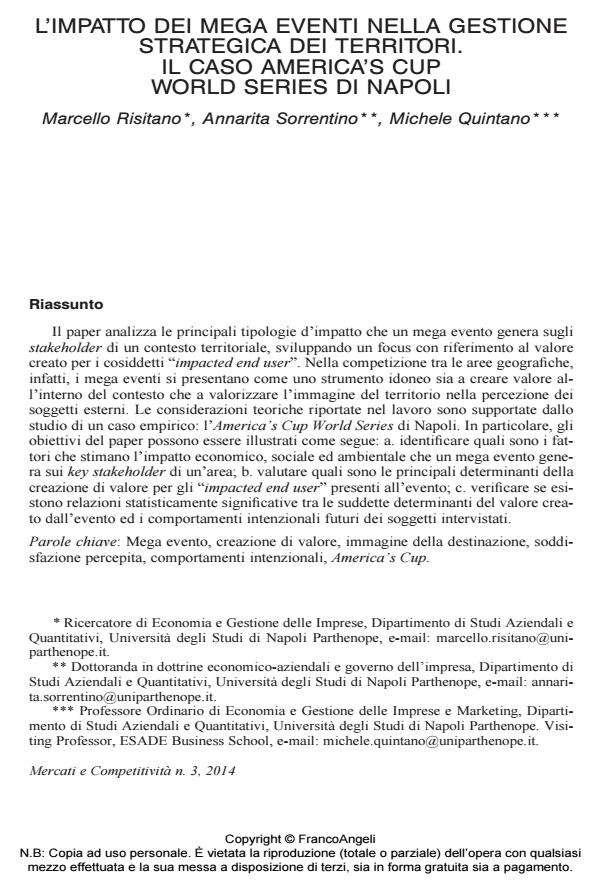L’impatto dei mega eventi nella gestione strategica dei territori. Il caso America’s Cup World Series di Napoli
Titolo Rivista MERCATI E COMPETITIVITÀ
Autori/Curatori Marcello Risitano, Annarita Sorrentino, Michele Quintano
Anno di pubblicazione 2014 Fascicolo 2014/3
Lingua Italiano Numero pagine 28 P. 113-140 Dimensione file 195 KB
DOI 10.3280/MC2014-003007
Il DOI è il codice a barre della proprietà intellettuale: per saperne di più
clicca qui
Qui sotto puoi vedere in anteprima la prima pagina di questo articolo.
Se questo articolo ti interessa, lo puoi acquistare (e scaricare in formato pdf) seguendo le facili indicazioni per acquistare il download credit. Acquista Download Credits per scaricare questo Articolo in formato PDF

FrancoAngeli è membro della Publishers International Linking Association, Inc (PILA)associazione indipendente e non profit per facilitare (attraverso i servizi tecnologici implementati da CrossRef.org) l’accesso degli studiosi ai contenuti digitali nelle pubblicazioni professionali e scientifiche
Il paper analizza le principali tipologie d’impatto che un mega evento genera sugli stakeholder di un contesto territoriale, sviluppando un focus con riferimento al valore creato per i cosiddetti "impacted end user". Nella competizione tra le aree geografiche, infatti, i mega eventi si presentano come uno strumento idoneo sia a creare valore all’interno del contesto che a valorizzare l’immagine del territorio nella percezione dei soggetti esterni. Le considerazioni teoriche riportate nel lavoro sono supportate dallo studio di un caso empirico: l’America’s Cup World Series di Napoli. In particolare, gli obiettivi del paper possono essere illustrati come segue: a. identificare quali sono i fattori che stimano l’impatto economico, sociale ed ambientale che un mega evento genera sui key stakeholder di un’area; b. valutare quali sono le principali determinanti della creazione di valore per gli "impacted end user" presenti all’evento; c. verificare se esistono relazioni statisticamente significative tra le suddette determinanti del valore creato dall’evento ed i comportamenti intenzionali futuri dei soggetti intervistati.
Parole chiave:Mega evento, creazione di valore, immagine della destinazione, soddisfazione percepita, comportamenti intenzionali, America’s Cup.
Marcello Risitano, Annarita Sorrentino, Michele Quintano, L’impatto dei mega eventi nella gestione strategica dei territori. Il caso America’s Cup World Series di Napoli in "MERCATI E COMPETITIVITÀ" 3/2014, pp 113-140, DOI: 10.3280/MC2014-003007